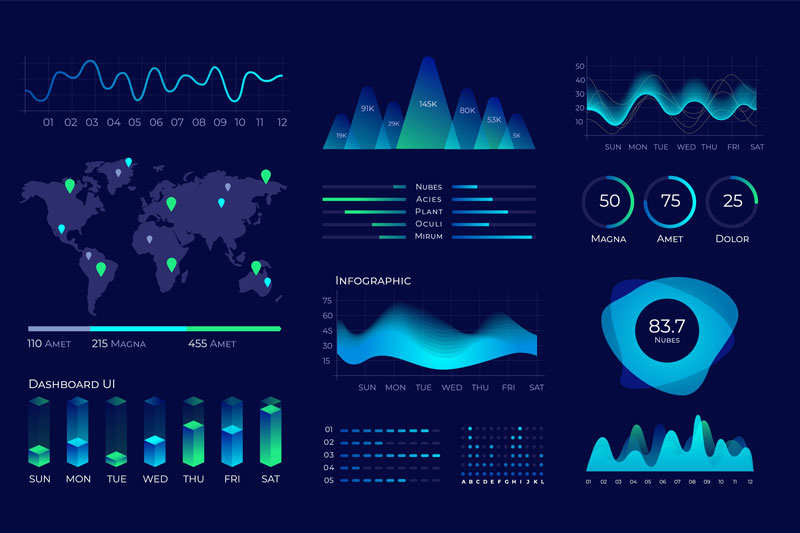For years, fans of the paranormal watched the investigations of agents Mulder and Scully on The X-Files, which aired from 1993–2002 in its original run. More than two decades later, the government is working to drop the ‘fiction’ from ‘science-fiction,’ and trying to determine if, indeed, as the tagline of The X-Files made famous, “The truth is out there.”
In late 2023, NASA published its Unidentified Anomalous Phenomena (UAP) Independent Study Team Report. In the report’s executive summary, the team promoted a rigorous, evidence-based approach to the study of UAP. “Addressing this challenge will require new and robust data acquisition methods, advanced analysis techniques, a systematic reporting framework and reducing reporting stigma,” they wrote.

Obstacles in analyzing data
The report starts off by explaining the problem: UAPs (formerly described as “unidentified flying objects,” or UFOs) are a mystery because there are limited high-quality observations of objects that have been observed but are not identifiable as balloons, aircraft, or natural phenomena. The report goes on to say, “The nature of science is to explore the unknown, and data is the language scientists use to discover our universe’s secrets.” The main takeaway from the report is that NASA does not have the data necessary to make any definitive, scientific conclusions about UAP.
One of the biggest obstacles to the effective use of analytics is not collecting data—it’s how to use the data that has already been collected. Most businesses have access to countless data points that can feel overwhelming without the appropriate focus to answer questions that will improve outcomes. In this case NASA is no different. The organization collects, and has access to, an incredible amount of data that it uses for a variety of reasons. The report suggests that NASA can repurpose some of that information to make the kinds of definitive and scientific conclusions it is looking for.

How NASA can better understand UAP
NASA already uses scientific tools that collect many kinds of data that help the organization explore the unknown in the atmosphere and space. The report suggests that NASA’s Earth- and space-observing assets can be directly leveraged to help the organization understand UAP. That includes:
- NASA’s Earth-observing satellites. The report states that this fleet of satellites collects the most data within the Earth system, but the satellites do not have the spatial resolution to detect relatively small objects such as UAP. The team suggests the satellites instead could determine the local earth, ocean, and atmospheric conditions that coincide with UAP detected by other methods.
- Radar. NASA currently or in the near future has access to different radar systems that can capture large areas in higher resolution that can help distinguish what the team calls “interesting objects from airborne clutter.”
- Artificial intelligence (AI) and machine learning (ML). The report is quick to point out that it is more important to improve the quality of the data it has than it is to develop new techniques to analyze data. Once NASA does have an extensive collection of reliable data, though, it can use that to train AI that can then detect unusual occurrences.
- Crowdsourcing. The report calls on NASA to explore whether it could develop or acquire a crowdsourcing system such as a smartphone app. The type of app it describes could gather imaging data and other smartphone sensor data from citizen observers.

Data governance an important piece of the puzzle
The current information can also be combined with historic data sets to help draw better conclusions than NASA has been able to do in the past. Data governance comes into play when all of these different sources are considered. It is not enough to just have the data, especially when it comes from sources that are being geared towards gathering other information. The report points out that this type of data governance is one of NASA’s strengths. “The application of NASA’s rigor to UAP data protocols will ultimately be essential for a detailed understanding of these phenomena,” the team writes.
The report points out that the current way of detecting UAP is to rely on serendipity, where sensors used for other purposes happen to capture something. What that something is, though, can’t be determined because there is not enough information to draw any kind of conclusions. The recommendations to NASA in the report are really to employ the kind of analytics any other industry would use. In order to make an informed decision, in this case to try to get a clearer definition of UAP, an organization needs to make sure the data it is gathering is directly related to the problem at hand. Whether it’s trying to identify something unusual in the sky or figuring out what is best for your organization, this truth is certainly out there: the right analytics solution can turn data into meaningful action.
- Using Data for Effective School Budget Decision Making - May 15, 2024
- 3 Important Characteristics of a Cannabis Analytics Solution - May 1, 2024
- Analyzing the Challenges of Pharmaceutical Supply Shortages - April 26, 2024


